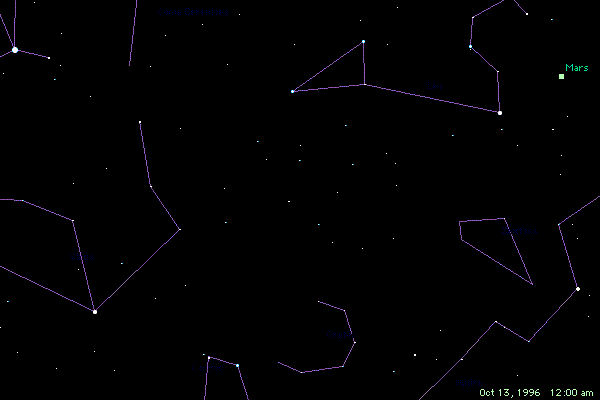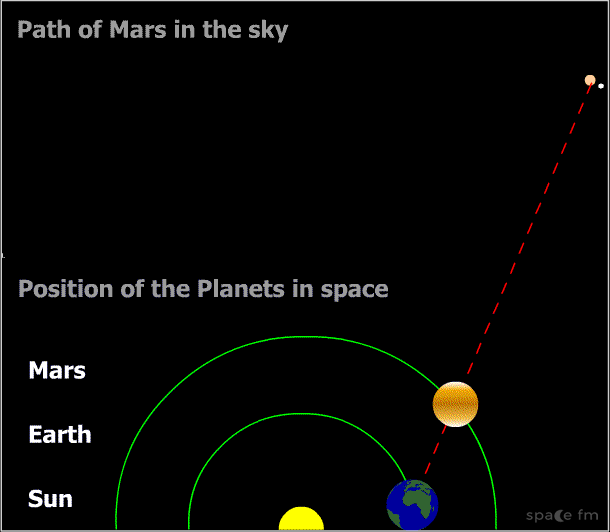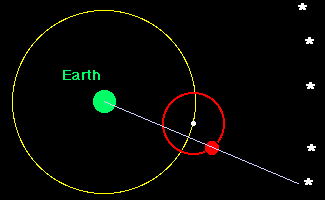 |
| The path of Mars, as viewed from the Earth. (Reload page to 're-animate' the gif.) |
 |
| The path of Mars, as viewed from the Earth. (Reload page to 're-animate' the gif.) |
 |
 |
| In this correct (heliocentric) perspective, when Earth and Mars are near each other and Earth overtakes Mars, Mars appears to move backwards from Earth's perspective. | In this incorrect (geocentric) explanation, Mars is actually moving backwards on its epicycle. |